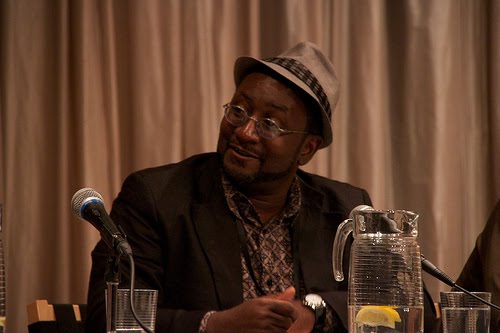I have four questions, actually.
Thanks,
H.W.
Q: I am writing a novel (of a supernatural nature), and I was wondering whether I should use a real place as the setting, or continue with the made-up realistic city that I have been using since the start of the book. I’ve read in various places that it’s best to use a real place, but should I really do that? I created the city in order to create a problem for my protagonist, who is supposed to be struggling a bit with racial issues in her community. She herself is of two ethnicities, Caucasian and Hispanic, and I thought it might be interesting to have her struggle with this fact in her high school and her community. I didn't want to set it in the past, and I didn't want it to be in the countryside or something. So, should I pull a J.K. Rowling, and use my imaginary place?
A: One of the great things about being a writer is that we get to make up worlds that do not but maybe should exist, and truth be told, whether we set our story in a made-up world or right down here on on our good old terra firma, we are creating a new world. At the beginning of my first novel, HOOCHIE MAMA, which is set in Opa-Locka, I posted the disclaimer that pretty much all writers post: "This is a work of fiction and it is set in the Opa-Locka of the writer's mind." You are an extremely creative and inventive person and I, personally, would love to see a book of yours set in a world you created. I think you would be good at it, and furthermore, you would be able to make controversial comments about this present world more honestly through the disguise of that artificial world. Sort of like Gulliver's Travels.
Q: Would it be a good idea to end the novel with a cliff hanger as Tolkien does in The Hobbit?
A: No. Not unless you have a real good reason to do so. People want to read a novel that is a complete work. A sequel is one thing, but to leave parts of it unwritten so that we are forced to buy a second book just to see how the first book ends is blatantly unfair. James Patterson did that in ROSES ARE RED and its follow up book VIOLETS ARE BLUE. I felt deceived as a reader. It felt like a sneaky way to get me to buy two short, incomplete novels, instead of one long complete novel. Furthermore, I don't understand your example. THE HOBBIT is a complete novel and has no cliff hanger at the end. Bilbo has his resolution. The book is done--fini-complete--but the LORD OF THE RINGS: THE FELLOWSHIP OF THE RINGS is a new story about Bilbo's nephew Frodo and his friends.
Q: Is it okay to stray a bit from traditional lore about supernatural things like werewolves and vampires?
A: By all means, please do. When you use werewolves and vampires, feel free to reinvent the wheel. You don't have to play by rules made up by Anne Rice or Stephenie Meyer or, for that matter, Bram Stoker. I have read books and seen movies about vampires with guns, vampires who live next door, a vampire who is a mafia godfather (who bites all of his underbosses so that he can create an indestructible mafia family), and in a recent film a world run by vampires, in which the humans are the monsters (sort of).
Q: Because it is geared toward a tween/teenage audience, I would like to depict high school as it really is, bullies, taunting, the whole nine yards. Is that okay, or should I make it so that some do not have to relive the horrors of high school?
A: I think the bullying and the taunting will make it more interesting, especially since I get the sense that that is one of the issues you want to explore in the book. Why not make the high school experience as real as possible and then set down a vampire or werewolf or some other supernatural creation of yours in it. Go back and read Stephen King's CHRISTINE and note how real and painful that high school experience is. Then suddenly, a '57 Chevy comes to life.
Good hearing from you H.W., and keep on writing. You've got talent and I can't wait to see what you produce.
Thanks,
Preston

No comments:
Post a Comment